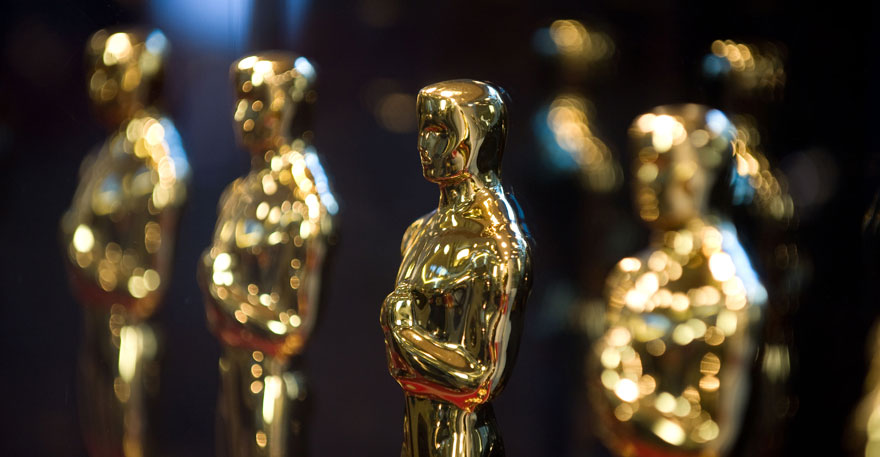 There's no doubt that filmmaking is an art form, but it's one which rests squarely on the shoulders of technology. Without the individuals who build on and re-imagine filmmaking technology, the cinematic experience wouldn't be the dynamic, ever-evolving thrill audiences have come to expect.
There's no doubt that filmmaking is an art form, but it's one which rests squarely on the shoulders of technology. Without the individuals who build on and re-imagine filmmaking technology, the cinematic experience wouldn't be the dynamic, ever-evolving thrill audiences have come to expect.
Since 1931, the Academy of Motion Picture Arts & Sciences has honored the accomplishments of such individuals with special Academy Awards for Scientific and Technical Achievement. On February 15, 2014, the Academy held this year's ceremony, hosting 52 sharply-dressed — and equally sharp-witted — award recipients in the ballroom of the iconic Beverly Hills Hotel.
Unlike other Academy Awards, the Scientific and Technical Achievement Awards are not limited to technology developed or implemented in the year prior. Software engineer Eric Veach, for example, received an award for his research on efficient Monte Carlo path tracing, which he completed in 1997 for his Ph.D. thesis at Stanford. Veach's research, which made physically-based rendering computationally feasible, was a fundamental breakthrough in computer graphics rendering — and is still relevant 17 years later.
"It's something I never imagined would be used to make a movie," said Veach to interviewer Lindsay Coryne. "This is an area that hundreds of people have worked on, and I'm honored the Academy has chosen to recognize my small part in that."
The silver screen payoff from Veach's research (which was further developed with Tom Lokovic at Pixar and presented at SIGGRAPH) can be glimpsed in the realistic, wind-ruffled fur of countless CG beasts and the softly-shadowed ringlets tumbling down the shoulders of many lifelike human characters.
Access Eric Veach's research in the ACM Digital Library
A few minutes before the commencement of the ceremony, host Kristen Bell stopped to chat with actor Lindsay Coryne, who was interviewing on behalf of ACM SIGGRAPH.
"I have such respect for all the artists who aren't normally acknowledged, which is why I'm here," Bell said. "When someone goes to a movie theater and witnesses something in front of them that isn't actually happening, but they're convinced it is — it's exciting! And let's be realistic," she continued, with charming humility, "What they do is a whole hell of a lot harder than what I do."

The 86th Academy Awards for Scientific and Technical Achievements are as follows:
TECHNICAL ACHIEVEMENT AWARDS
- Olivier Maury, Ian Sachs and Dan Piponi for the creation of the ILM Plume system.
- Ronald D. Henderson for the development of the FLUX gas simulation system.
- Andrew Camenisch, David Cardwell and Tibor Madjar for the concept and design, and to Csaba Kohegyi and Imre Major for the implementation of the Mudbox software.
- Martin Hill, Jon Allitt and Nick McKenzie for the creation of the spherical harmonics-based efficient lighting system at Weta Digital.
- Florian Kainz, Jeffery Yost, Philip Hubbard and Jim Hourihan for the architecture and development of the Zeno application framework.
- Peter Huang and Chris Perry for their architectural contributions to, and to Hans Rijpkema and Joe Mancewicz for the core engineering of, the Voodoo application framework.
- Matt Pharr, Greg Humphreys and Pat Hanrahan for their formalization and reference implementation of the concepts behind physically based rendering, as shared in their book "Physically Based Rendering."
- Dr. Peter Hillman for the long-term development and continued advancement of innovative, robust and complete toolsets for deep compositing.
- Colin Doncaster, Johannes Saam, Areito Echevarria, Janne Kontkanen and Chris Cooper for the development, prototyping and promotion of technologies and workflows for deep compositing.
- Thomas Lokovic and Eric Veach for their influential research and publication of the fundamental concepts of deep shadowing technology.
- Gifford Hooper and Philip George of HoverCam for the continuing development of the Helicam miniature helicopter camera system.
- John Frazier, Chuck Gaspar and Clay Pinney for the design and development of the Pneumatic Car Flipper.
- Joshua Pines, David Reisner, Lou Levinson, Curtis Clark, ASC, and David Register for the development of the American Society of Cinematographers Color Decision List technology.
- Jeremy Selan for the development of the OpenColorIO color management framework.
SCIENTIFIC AND ENGINEERING AWARDS
- Ofer Alon for the design and implementation of the ZBrush software tool for multi-resolution sculpting of digital models.
- Eric Veach for his foundational research on efficient Monte Carlo path tracing for image synthesis.
- Andre Gauthier, Benoit Sevigny, Yves Boudreault and Robert Lanciault for the design and implementation of the FiLMBOX software application.
- Emmanuel Prevenaire, Jan Sperling, Etienne Brandt and Tony Postiau for their development of the Flying-Cam SARAH 3.0 system.
ACADEMY AWARD® OF MERIT
- To all those who built and operated film laboratories, for over a century of service to the motion picture industry.
GORDON E. SAWYER AWARD
- Peter W. Anderson for technological contributions which have brought credit to the industry.
JOHN A. BONNER MEDAL OF COMMENDATION
- Charles “Tad” Marburg in appreciation for outstanding service and dedication in upholding the high standards of the Academy of Motion Picture Arts and Sciences.


Leave a Reply
You must be logged in to post a comment.